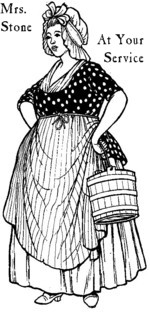
Links
- Mail Me
- Westward Expansion Pre-1820 Email List
- The First American West:The Ohio River Valley, 1750-1820
- Early American Roads and Trails
- Western Movement
- The Colonial Heritage of St. Louis Missouri
Blogroll Me!
Blogroll

Archives
Writings, discussions and studies about the US westward migration between the Revolutionary War and the beginning of the Oregon Trail
Wednesday, December 22, 2004
Building Roads into Western Pennsylvania, 1760s and 1770s
Two well defined routes of travel lead from the frontier settlements to the Indian town at the forks of Susquehanna. That pursued by the Indian traders and early explorers followed the course of the river; the other, which may with some degree of propriety be called the overland route, began at the settlements on the Tulpehocken, crossed the various mountains and streams in a northwesterly direction, and probably intersected the river some distance below Shamokin.
Internal improvements in Northumberland county first received attention during the construction of Fort Augusta. The following entry appears in Major Burd's diary of January 15, 1757: "This day I went with Captain Shippen and a party and laid out a straight road round Shamokin Hill for the benefit of transporting our provisions hither, finding it impracticable to pass over the mountain." On the 17th he went himself with a party and began to open the road. On the 20th instant he wrote: "This day I sent Captain Shippen and the adjutant with a small party to extend the road from the first rise over the gut to the forks of the road on the top of the mountain, with orders to blaze it ....Captain Shippen returns and reports he had found a very good road with an easy ascent over the mountain that could be traveled at all times, and had blazed it well. This day the party clearing the road to the first rise and making the bridge over the gut reports the same finished." This was the first road regularly laid out in the county.(Pennsylvania Archives Second Series), Vol. II. pp. 754-755)
While a regularly opened highway would doubtless have greatly facilitated military operations, the first effort to open a road through the present territory of the county resulted principally from commercial considerations. At a meeting of the provincial Council on the 30th of January, 1768, (Colonial Records, Vol. IX. p.440) a petition was presented from "a very considerable number of the inhabitants of Berks county," setting forth that if a road were opened from Reading to Fort Augusta "it would greatly tend to advance the trade and commerce with the Indians who are settled at the heads of the Susquehanna river, and to preserve the friendship and peace with them, and would also save great charge and expense in transporting skins and firs from thence, as the distance from that fort to Philadelphia by way of Reading is much shorter than any other." Upon taking the matter into consideration the board coincided with the petitioners regarding the public utility of the road, but, as part of the country through which it would pass to Fort Augusta had not yet been relinquished by the Indians, it was not deemed advisable to open it beyond the line of the purchase of 1749. An order was forthwith issued directing Jonas Seely, John Patton, Henry Christ, James Scull, Frederick Weiser, Benjamin Spycker, Mark Bird, Christian Laur, and Thomas Jones, Jr. to lay out a road by the most direct course from Reading toward Fort Augusta as far as the line of the purchase of 1749 or to some point on the Susquehanna river between the mouth of Mahanoy creek and Mahanoy mountain. The road was accordingly laid out and a return thereof made to Council.(Colonial Records, Vol. Ix. pp. 556-561) Beginning at Reading it extended in a general northwesterly course fourteen miles ninety-one perches, to the Tulpehocken; thence eight miles ninety-four perches, to the Swatara; thence twenty-eight miles two hundred forty perches, to the Spread Eagle in the forks of Mahantango; thence four miles two hundred fifty-seven perches, to Schwaben creek; thence five miles one hundred sixty-four perches, "to a white-oak on the bank of Susquehanna river and south side of the Mahanoy mountain" - a total length of sixty-one miles two hundred six perches. As thus returned the road was confirmed by Council on the 19th of January, 1769, and an order forthwith issued that it should be opened and cleared, "and rendered commodious for public service." Its course had evidently been a traveled route before, as mention is made of "the lower end of the dug road," "the old feeding place," "the old path to Lykens' valley," "a noted spring by the old path," etc. This was the old Tulpehocken road, the first public highway legally opened in Northumberland county.
On the 16th of January, 1770, a petition (Pennsylvania Archives, Vol. IV. pp. 362-363) was prepared, setting forth the advantages to be derived from the opening of a road "from Fort Augusta to Ellis Hughes's saw mill, on the navigable part of Schuylkill about thirty miles above Reading." It was considered by Council on the 9th of February, when George Webb, Jonathan Lodge, Henry Miller, Henry Shoemaker, John Webb, Isaac Willits, and Job Hughes were appointed to lay out the road, in which service all of them participated except Henry Miller. The report was returned to Council under date of April 14, 1770; it received the consideration of that body on the 23d of the same month, when an order was issued confirming the road as laid out and directing that it should be "opened and rendered commodious for public service." It was declared to be a "King's highway." From a point on the Schuylkill three fourths of a mile below Hughes's saw mill to "the bark of the river Susquehanna by the northwest corner of Fort Augusta" the length was "thirty-nine miles and one quarter and nineteen perches." The general course coincided with that of the Centre turnpike, crossing Broad mountain, Mahanoy creek and mountain, and Shamokin creek This highway has been popularly known in Northumberland county as the old Reading road,(Colonial Records, Vol. IX. pp. 651-666) and, with the Tulpehocken road, constituted the facilities of overland communication in this part of the State at the organization of the county.
Source: History of Northumberland County, Pennsylvania edited by Herbert C. Bell, Chicago, 1891. pp 297-299
Internal improvements in Northumberland county first received attention during the construction of Fort Augusta. The following entry appears in Major Burd's diary of January 15, 1757: "This day I went with Captain Shippen and a party and laid out a straight road round Shamokin Hill for the benefit of transporting our provisions hither, finding it impracticable to pass over the mountain." On the 17th he went himself with a party and began to open the road. On the 20th instant he wrote: "This day I sent Captain Shippen and the adjutant with a small party to extend the road from the first rise over the gut to the forks of the road on the top of the mountain, with orders to blaze it ....Captain Shippen returns and reports he had found a very good road with an easy ascent over the mountain that could be traveled at all times, and had blazed it well. This day the party clearing the road to the first rise and making the bridge over the gut reports the same finished." This was the first road regularly laid out in the county.(Pennsylvania Archives Second Series), Vol. II. pp. 754-755)
While a regularly opened highway would doubtless have greatly facilitated military operations, the first effort to open a road through the present territory of the county resulted principally from commercial considerations. At a meeting of the provincial Council on the 30th of January, 1768, (Colonial Records, Vol. IX. p.440) a petition was presented from "a very considerable number of the inhabitants of Berks county," setting forth that if a road were opened from Reading to Fort Augusta "it would greatly tend to advance the trade and commerce with the Indians who are settled at the heads of the Susquehanna river, and to preserve the friendship and peace with them, and would also save great charge and expense in transporting skins and firs from thence, as the distance from that fort to Philadelphia by way of Reading is much shorter than any other." Upon taking the matter into consideration the board coincided with the petitioners regarding the public utility of the road, but, as part of the country through which it would pass to Fort Augusta had not yet been relinquished by the Indians, it was not deemed advisable to open it beyond the line of the purchase of 1749. An order was forthwith issued directing Jonas Seely, John Patton, Henry Christ, James Scull, Frederick Weiser, Benjamin Spycker, Mark Bird, Christian Laur, and Thomas Jones, Jr. to lay out a road by the most direct course from Reading toward Fort Augusta as far as the line of the purchase of 1749 or to some point on the Susquehanna river between the mouth of Mahanoy creek and Mahanoy mountain. The road was accordingly laid out and a return thereof made to Council.(Colonial Records, Vol. Ix. pp. 556-561) Beginning at Reading it extended in a general northwesterly course fourteen miles ninety-one perches, to the Tulpehocken; thence eight miles ninety-four perches, to the Swatara; thence twenty-eight miles two hundred forty perches, to the Spread Eagle in the forks of Mahantango; thence four miles two hundred fifty-seven perches, to Schwaben creek; thence five miles one hundred sixty-four perches, "to a white-oak on the bank of Susquehanna river and south side of the Mahanoy mountain" - a total length of sixty-one miles two hundred six perches. As thus returned the road was confirmed by Council on the 19th of January, 1769, and an order forthwith issued that it should be opened and cleared, "and rendered commodious for public service." Its course had evidently been a traveled route before, as mention is made of "the lower end of the dug road," "the old feeding place," "the old path to Lykens' valley," "a noted spring by the old path," etc. This was the old Tulpehocken road, the first public highway legally opened in Northumberland county.
On the 16th of January, 1770, a petition (Pennsylvania Archives, Vol. IV. pp. 362-363) was prepared, setting forth the advantages to be derived from the opening of a road "from Fort Augusta to Ellis Hughes's saw mill, on the navigable part of Schuylkill about thirty miles above Reading." It was considered by Council on the 9th of February, when George Webb, Jonathan Lodge, Henry Miller, Henry Shoemaker, John Webb, Isaac Willits, and Job Hughes were appointed to lay out the road, in which service all of them participated except Henry Miller. The report was returned to Council under date of April 14, 1770; it received the consideration of that body on the 23d of the same month, when an order was issued confirming the road as laid out and directing that it should be "opened and rendered commodious for public service." It was declared to be a "King's highway." From a point on the Schuylkill three fourths of a mile below Hughes's saw mill to "the bark of the river Susquehanna by the northwest corner of Fort Augusta" the length was "thirty-nine miles and one quarter and nineteen perches." The general course coincided with that of the Centre turnpike, crossing Broad mountain, Mahanoy creek and mountain, and Shamokin creek This highway has been popularly known in Northumberland county as the old Reading road,(Colonial Records, Vol. IX. pp. 651-666) and, with the Tulpehocken road, constituted the facilities of overland communication in this part of the State at the organization of the county.
Source: History of Northumberland County, Pennsylvania edited by Herbert C. Bell, Chicago, 1891. pp 297-299
